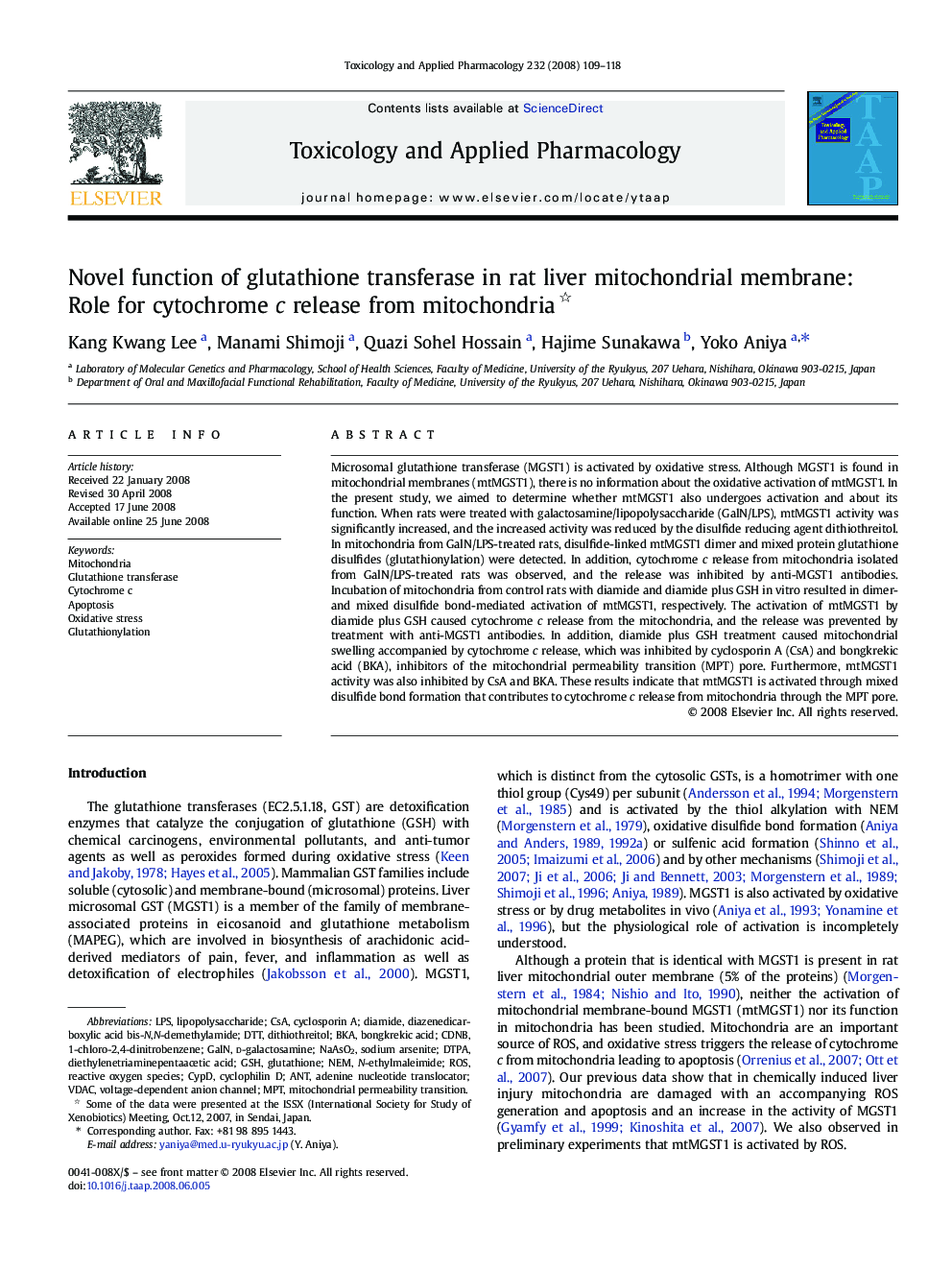| Article ID | Journal | Published Year | Pages | File Type |
|---|---|---|---|---|
| 2570994 | Toxicology and Applied Pharmacology | 2008 | 10 Pages |
Microsomal glutathione transferase (MGST1) is activated by oxidative stress. Although MGST1 is found in mitochondrial membranes (mtMGST1), there is no information about the oxidative activation of mtMGST1. In the present study, we aimed to determine whether mtMGST1 also undergoes activation and about its function. When rats were treated with galactosamine/lipopolysaccharide (GalN/LPS), mtMGST1 activity was significantly increased, and the increased activity was reduced by the disulfide reducing agent dithiothreitol. In mitochondria from GalN/LPS-treated rats, disulfide-linked mtMGST1 dimer and mixed protein glutathione disulfides (glutathionylation) were detected. In addition, cytochrome c release from mitochondria isolated from GalN/LPS-treated rats was observed, and the release was inhibited by anti-MGST1 antibodies. Incubation of mitochondria from control rats with diamide and diamide plus GSH in vitro resulted in dimer- and mixed disulfide bond-mediated activation of mtMGST1, respectively. The activation of mtMGST1 by diamide plus GSH caused cytochrome c release from the mitochondria, and the release was prevented by treatment with anti-MGST1 antibodies. In addition, diamide plus GSH treatment caused mitochondrial swelling accompanied by cytochrome c release, which was inhibited by cyclosporin A (CsA) and bongkrekic acid (BKA), inhibitors of the mitochondrial permeability transition (MPT) pore. Furthermore, mtMGST1 activity was also inhibited by CsA and BKA. These results indicate that mtMGST1 is activated through mixed disulfide bond formation that contributes to cytochrome c release from mitochondria through the MPT pore.
